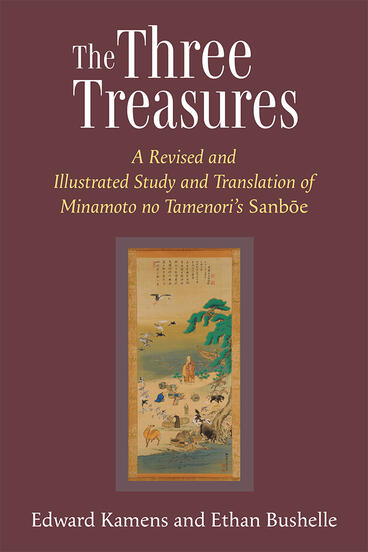The Three Treasures
A Revised and Illustrated Study and Translation of Minamoto no Tamenori's Sanboe
An updated, augmented, and illustrated study and translation of this landmark collection of Buddhist tales
Description
When the young Princess Sonshi became a Buddhist nun in the year 984, a scholar-official of the royal court was commissioned to create a guide to the Buddhist religion that would be accessible for her. He did so in the form of the illustrated works of fiction (monogatari) that appealed to women readers of her time and class. The text has survived in later manuscripts; the illustrations, if they ever existed, have not. This revised translation recreates Sonshi’s experience of receiving this multimedia presentation, with illustrations selected to help contemporary readers visualize its content and essays that provide context on the religious and cultural experience of the author. The Three Treasures is a unique document that opens a window onto the world of Buddhist religious experience—especially for women—in high classical Japan, the time of Sei Shōnagon’s Pillow Book and Murasaki Shikibu’s Tale of Genji.
Edward Kamens is Sumitomo Professor of Japanese Studies at Yale University.
Ethan Bushelle is Assistant Professor of East Asian Religions and Culture at Western Washington University.
Reviews
“Dr. Kamens has researched his subject well and presents his study with a clarity that will be appreciated by students and scholars of Japanese literature, language, Buddhism, and history. The work of Tamenori is here translated into excellent English. . . . The Three Jewels is well researched and so well presented that it cannot fail to arouse interest in Western academic circles.”
- Bulletin of the School of Oriental and African Studies
—Bulletin of the School of Oriental and African Studies (review of original edition)
“Kamens’s book makes a significant contribution to our understanding not only of the centrality of magical thinking in tales and legends, but also about the manner in which it is intertwined with the classical literature of the Buddhist tradition and Japan.”
- Japanese Journal of Religious Studies
—Japanese Journal of Religious Studies (review of original edition)

